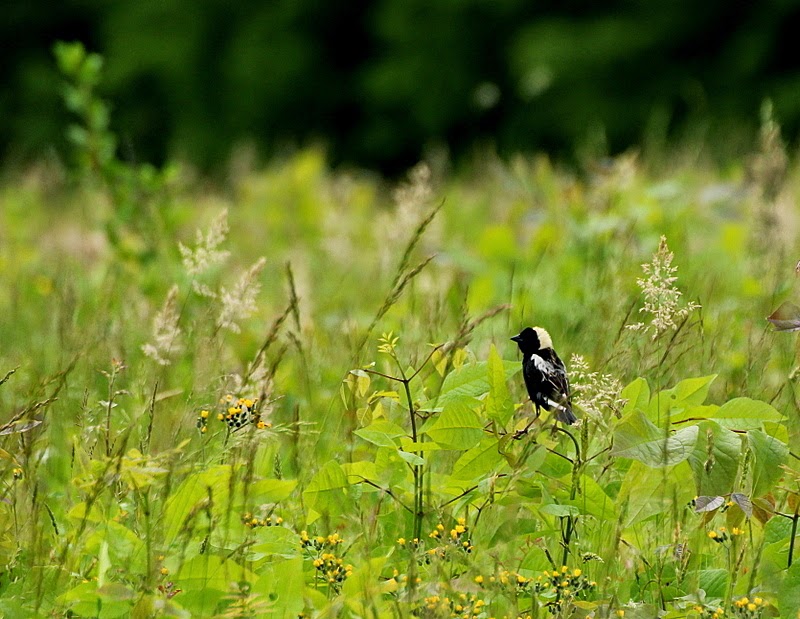It’s time for Bobolinks again! Last summer, I wrote about the Bobolink songs in three
different locations I frequent. The songs at each of those locations
were different from those at the other two, but consistent within each location. Some of you found this quite interesting and
subsequently asked me if I was planning to record Bobolinks in additional
locations and continue my song comparisons this year.
That was all the encouragement I
needed! I added 9 more locations this
year, including Summit, Stark, Medina, Lorain, and Ashland Counties.
Since I'll have a number of new sound files to share with you, I’m going to divide this story into three chapters and tie everything together as best I can in the last of the series. I’ll also let you in on the question I really want to answer in 2015.
Since I'll have a number of new sound files to share with you, I’m going to divide this story into three chapters and tie everything together as best I can in the last of the series. I’ll also let you in on the question I really want to answer in 2015.
Last year’s Bobolink post can be found here. You can listen to the comparisons between the
Holden Arboretum in Lake County, the Case Western Reserve University Farm (aka “Squire
Valleevue”) in southern Cuyahoga County, and Frohring Meadows and the adjacent
South Russell Village Park in southwestern Geauga County.
I’m not analyzing every aspect of these songs. My original question for myself had been: how
do I know by ear which Bobolink group I’m hearing? Those songs are tied to a specific location –
they are part of what defines each of those meadows.
So what part of the song is recognizable enough that a
mere human can identify it as different from other Bobolink songs? I’m a professional musician, but I must tell
you that a lot of those sounds are simply too rapid, layered, and complex for
my human listening skills to sort out in real time. Still, there are certain musical elements
that I can grasp – and some of you can as well.
I’ll start with sonagrams followed by Western musical
notation of the three distinctive motives I know so well. You'll be able to listen to a
recording that plays each one twice. I’ll
use that as my starting place so we can see – and especially hear – how the
songs at my new locations relate to them or to each other. The order is: Frohring Meadows/South Russell Village Park, CWRU Farm, and Holden Arboretum
I did warn you in my bio that I’m a music theory faculty
member at the Cleveland Institute of Music, but I don’t think I’m going to be a
complete music theory nerd about this. It’s
about the mystery of why these groups of birds sing somewhat different songs
and how their sense of place – their breeding habitat – and our sense of place
just might intersect out there in the meadows of NE Ohio.
When I taught my Holden Arboretum class on “Music in the
Meadow” and led the subsequent bird song listening hike. I had the participants
sing the distinctive melodic motive that defines the Holden Bobolink song. They all sang it (people in my classes are
such good sports about things like this) and they subsequently recognized it when we
hiked up the mowed path into the meadow with singing Bobolinks around
us.




No comments:
Post a Comment